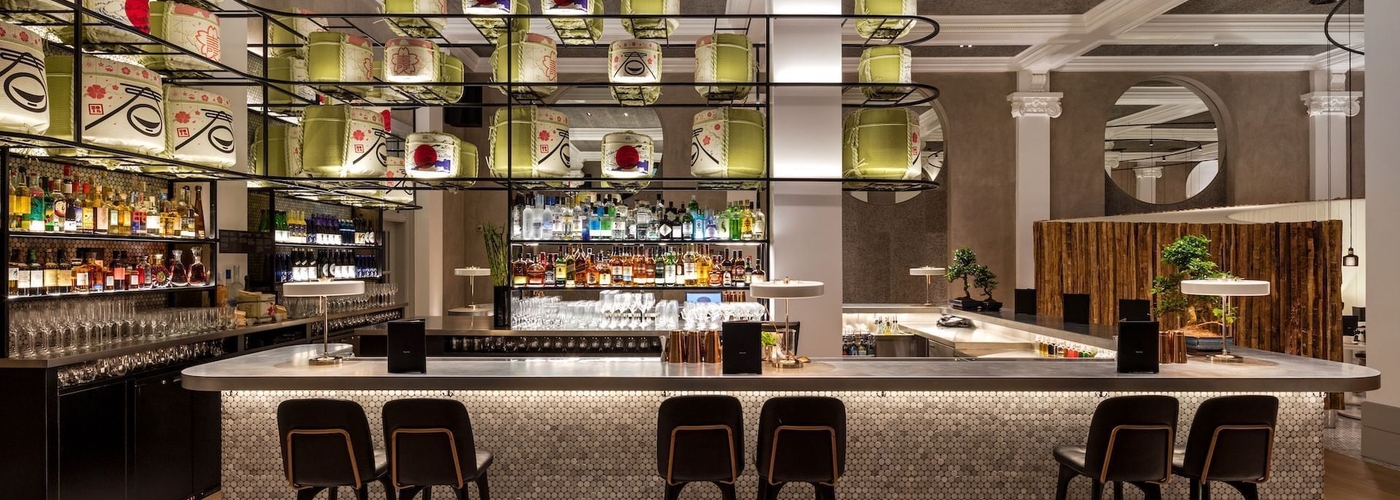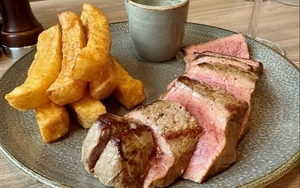Jamie Ryder, founder of Yamato Magazine lets us in to the secrets of sake
The world is full of fascinating drinks. Beverages that go hand in hand with the stories and histories of different cultures and a perfect example is Japanese sake. Versatile, delicious and accessible, sake has lots of enjoyable qualities and in the UK, the majority of sake activity is concentrated in London. But the capital isn’t the only sake game in town.
Manchester is flying the flag for Japan’s national drink up north through organisations like the Northern Wine School for sake education and tastings.
Meanwhile, the Japanese food scene in Manchester continues to go from strength to strength with loads of tasty concepts that involve finding the meaning of life at the bottom of a bowl of ramen or elevating sushi to new heights.
Among these restaurants and bars, you’ll find plenty of great sake and this guide will take you on a voyage across Manchester in search of what to try and buy.
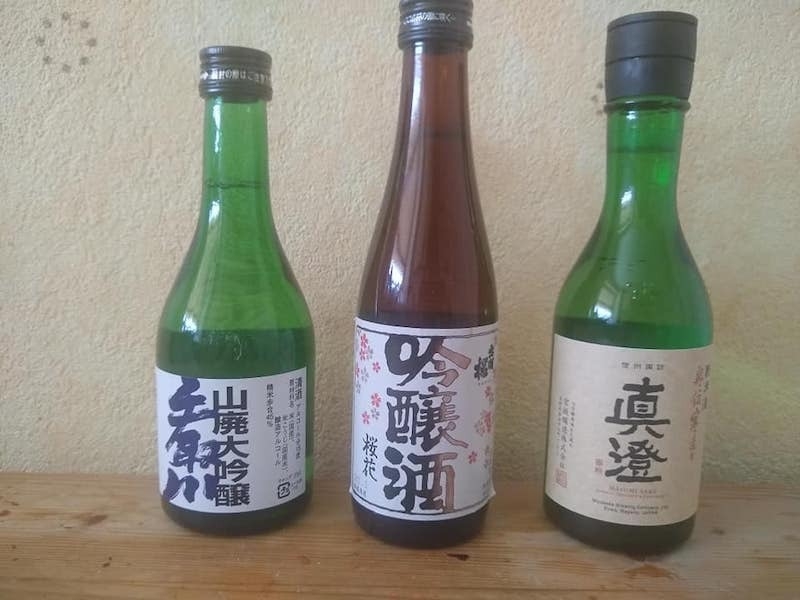
What is sake?
It’s important to point out that all alcohol in Japan is referred to as sake, including spirits, beer and wine. The drink that’s known as sake is officially called nihonshu, which translates to 'Japanese alcohol' in English.
To keep things as simple as possible, I’ll be referring to this awesome drink as sake.
Sake is a fermented alcoholic drink made from rice, water, yeast and a special Japanese mould called koji. It’s bottled an at average 15% - 16% ABV and can go up to 20%.
What sake isn't
It’s best to think of sake as its own unique category. There’s nothing else like it in the world and here’s a reminder of what it isn't:
- Rice wine
- Beer
- Wine
- Whisky
- Gin
- Rum
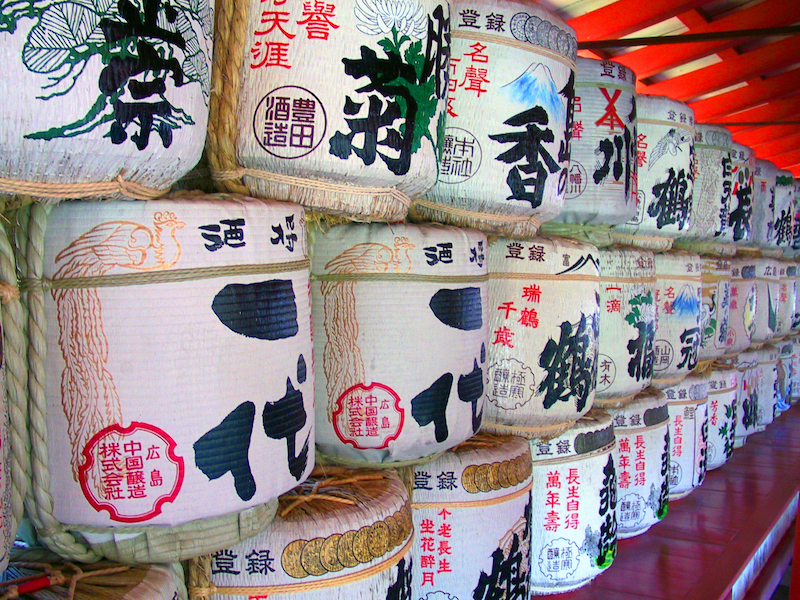
How is sake made?
The sake-making process is extremely complex, with high-quality products being made by brewers who’ve dedicated themselves to furthering an ancient craft. (Sake-making has been going on since the 3rd century BC)
I’ve simplified the process and split it into six sections:
Rice preparation
Sake rice is grown, harvested and then polished in a rice milling machine. The rice is washed, soaked, steamed and cooled.
Koji production
Koji spores (referred to as koji-kin in Japan) are sprinkled onto the rice and left to propagate for roughly two days.
Starter mash (Moto)
Steamed rice, water and yeast are added to the koji to create a starter mash. With modern starter-making methods, this part of the process is completed in two weeks.
Main fermentation (Moromi)
More steamed rice, water and koji are added to the mash to accelerate fermentation. A process unique to sake takes place called multi-parallel fermentation. This is when the koji and yeast combine to convert the rice's starches into sugar and alcohol. The main fermentation is done in three stages over four days and is completed in two to five weeks.
Pressing
The moromi is pressed to separate the alcohol from everything else. Methods include using an automatic pressing machine, hanging the moromi in cloth sacks etc.
Post-fermentation
Several additional steps can be made depending on the type of sake. This may include filtering and pasteurisation to kill any harmful bacteria in the sake. In the end stages, the sake is also diluted and then bottled.

What kind of sake categories are there?
The beauty of sake is there are countless styles to try and here’s a breakdown of some of the most common categories:
Ginjo
If you’re looking at a sake menu and see the word ginjo you’re in safe hands. Ginjo sake is polished at 60% and has small amounts of added alcohol. It may have floral, white wine characteristics and the recommendation is to drink it cold or at room temperature.
Daiginjo
Considered the most refined kind of sake, daiginjo has a rice polishing rate of 50% or lower. The flavours are highly aromatic and it’s best served cold.
Junmai
Translating to pure rice, junmai sake doesn’t have any added alcohol. This doesn’t mean it’s any better than other categories (all sake is worth trying). It may have robust, savoury flavours. Good for drinking hot or cold.
Honjozo
Honjozo sake has a rice polishing rate of 70% and may have aromatic or savoury flavours. Worth drinking warm or cold.
Futsushu
Table sake. Usually the most cost-effective to drink and has a wide range of flavours. Sample hot or cold.
Nigori
Cloudy sake that tastes sweet and does well as an after-dinner drink or before.
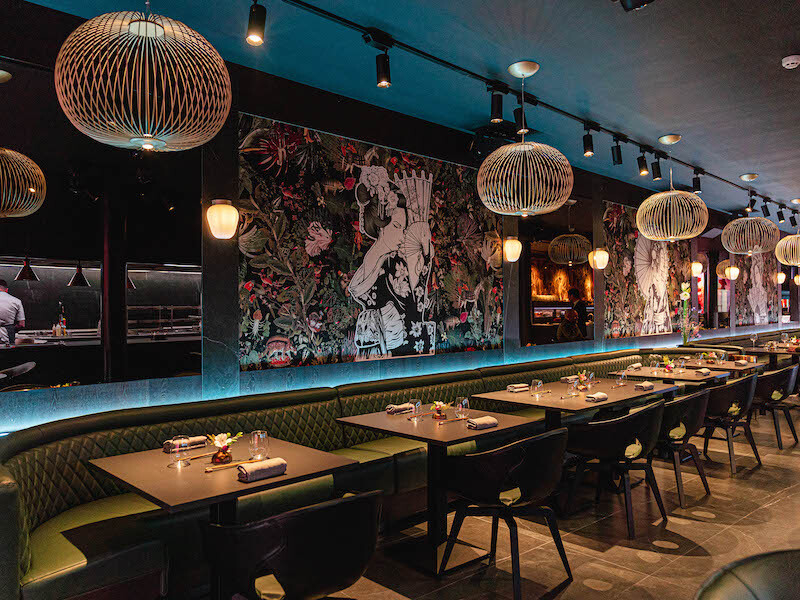
Where can you get your hands on sake in Manchester?
MUSU
One of the newest kids on the block, MUSU has already been making waves since it opened in the back half of 2022. Translating to ‘infinite possibilities’, the restaurant lives up to its name with a wide set of food choices (It’s always exciting to see omakase and kaiseki options on the menu, as you’re going to be treated to the very best of Japanese ingredients).
The sake in MUSU reflects the attention to detail, with drinks being served by the glass and in bottles. Start your night off with the Bessen Futsushu, a table sake that can go toe to toe with premium ginjos and daiginjos. It’s light, clean and easy to sip like a cool white wine.
Get stuck into the Ginjo Oka and Ginjo Izumi Judan from the famous Dewazakura brewery In Yamagata Prefecture. Oka put the ginjo category on the map and like its English name ‘cherry bouquet’, there is a beautiful floral quality to the drink.
If you fancy being more adventurous, order Dewazakura’s sparkling nigori. Translating to ‘festival of stars’, this sake will remind you of champagne or prosecco.
For something expensive, try the Iki na onna daiginjo. Called ‘Lady Luck,’ this sake is made in limited amounts for the Association Of Female Sake Retailers and has a complex blend of cinnamon, apple and caramel.
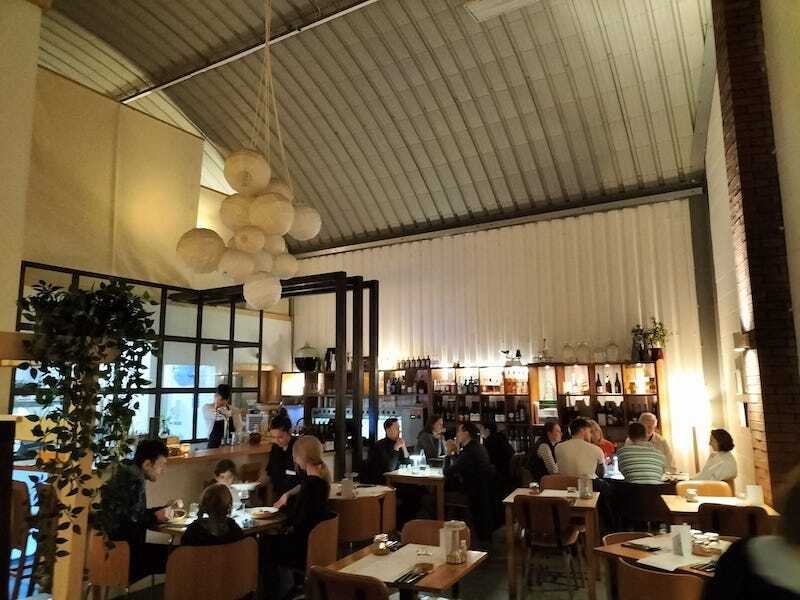
The Sparrows
A restaurant that’s been knocking out exceptional Tyrolean and Italian food for the last few years, doubles as a sake shop and there’s a new Japanese bar concept on the way called Suzume.
The Suzume store is the best place to discover the kind of sake the restaurant offers and it’s a gold mine of fantastic choices. A great example is the Kuncho honjozo, which has creamy, savoury notes and pairs well with the food on offer.
Another recommendation is sake from the Nito brand, which you’ll recognise by two cheeky hares on the label. All bottles under the brand have a wonderful amount of balance and richness.
You can always feel like royalty with the Hinomaru Bekkaku daiginjo. This tropical sake was served at the current Emperor of Japan Naruhito’s reception dinner.
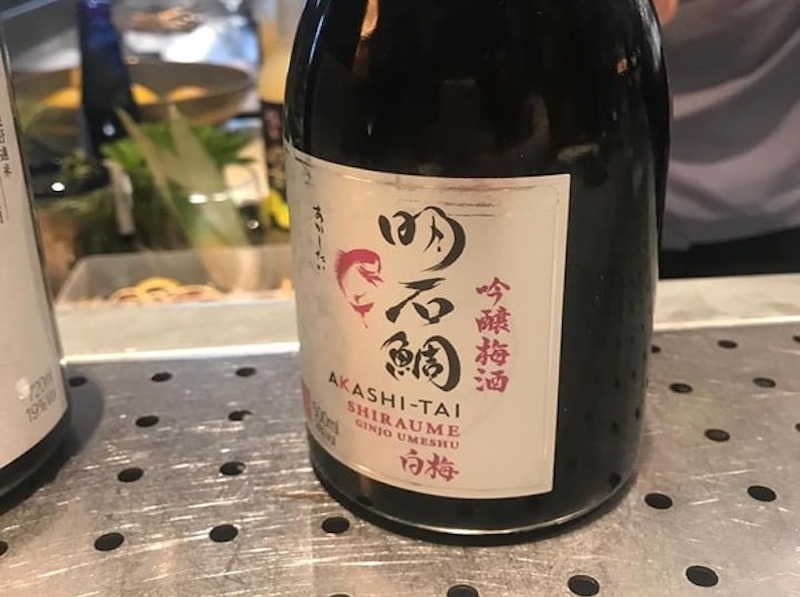
Rikyu Bar in The Edwardian
The Edwardian hotel on Deansgate is home to a few interesting food and drink concepts. The Rikyu bar is a hidden gem with a respectable sake menu filled with famous brands like Dassai 23, a high-quality daiginjo with notes of melon, pear and stonefruit.
Rikyu is also the home of the sake that sent me down the rabbit hole: Akashi-Tai shiraume umeshu. Akashi-Tai is one of the most accessible sake brands in the UK and can be recognised by the sea bream on the label.
You absolutely must try the Geinbei san-no onikoroshi or demon killer. Best served hot, this sake is packed with flavour.
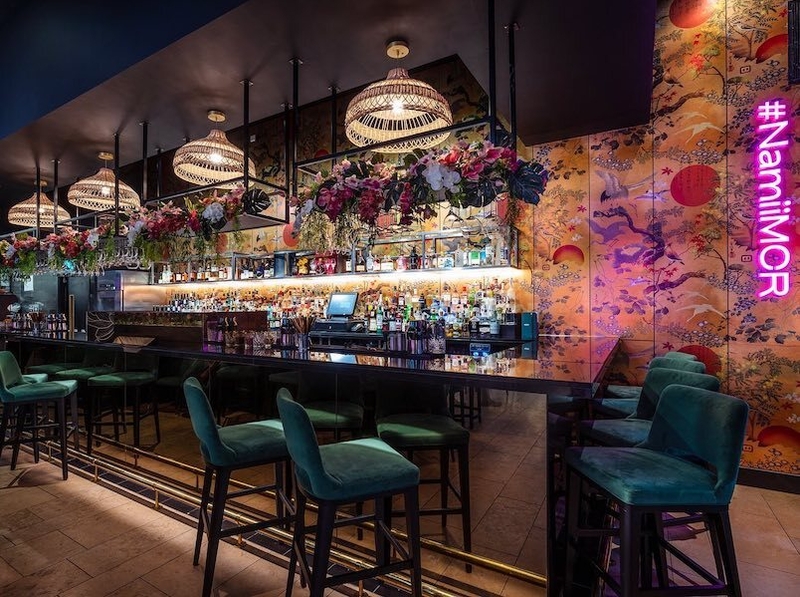
Namii
Serving up reliable pan-Asian fare, Namii has an extensive drinks menu and the sake section is heavy on the Akashi-Tai. One from the brand to try at Namii is the honjozo genshu, a designation that means the sake is undiluted and has a stronger kick.
Two other interesting brands are Black Dragon, which has a dry, light profile. The other is the Origami Red sake, a tasty drink with rich red colouring. This unique colour comes from the drink being brewed from Asamurasaki rice and comes with fruity, umami flavours.
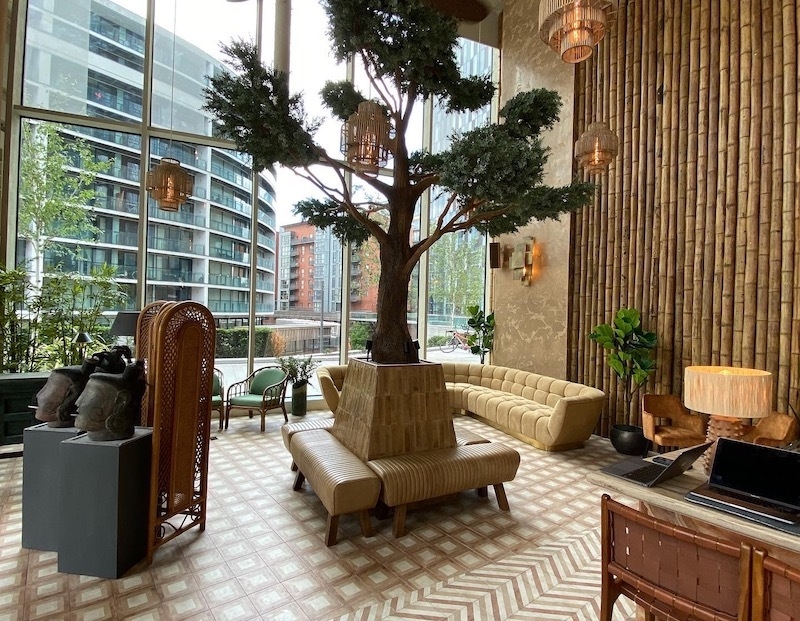
Kitten
The word izakaya AKA a laid-back type of Japanese bar gets thrown around a lot with Japanese-inspired restaurants. While I wouldn’t classify Kitten as an izakaya, it does stock a decent range of sake.
One that jumps off the menu for the adventurous type is the Narutotai ginjo nama genshu. The most interesting word here is ‘nama’ meaning the sake is unpasteurised. That means this particular sake tastes really fresh with a complex layer of nuts, spices and yoghurt.
A great beginner bottle on the menu is the Urakasumi junmai. Soft and silky, you’ll taste peach and cotton candy.
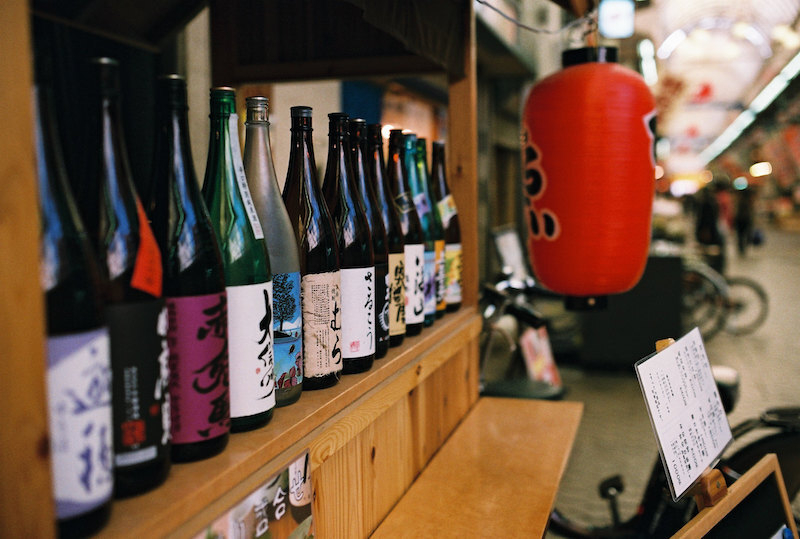
The ten thousand ways philosophy
There’s a famous Japanese expression that claims sake can be made ten thousand ways. The graft brewers put into making the drink, combined with the variation in flavours and ways to experience sake, makes that expression ring true.
As a trained educator with the Sake Sommelier Association and as an International Kikisake-shi, it’s a privilege to be able to share the ten thousand ways philosophy with the world and it’s something you can learn to do too.
To pass these qualifications, you’ll learn about the history of sake, do blind tastings and discover how to sell sake in different settings. Or you can learn about the wonderful world of Japanese drinks one sip at a time at any of the venues listed above. I’m optimistic about the sake scene continuing to grow in Manchester for years to come.
About the writer
Jamie Ryder is a drinks copywriter, sake educator and founder of Yamato Magazine. He’s also focused on championing drink categories across the world through his newsletter Drink To That.
Read next: Department: the most beautiful shop on Barlow Moor Road
Read again: The Hot 50: the most popular restaurants in Manchester
Get the latest news to your inbox
Get the latest food & drink news and exclusive offers by email by signing up to our mailing list. This is one of the ways that Confidentials remains free to our readers and by signing up you help support our high quality, impartial and knowledgable writers. Thank you!






